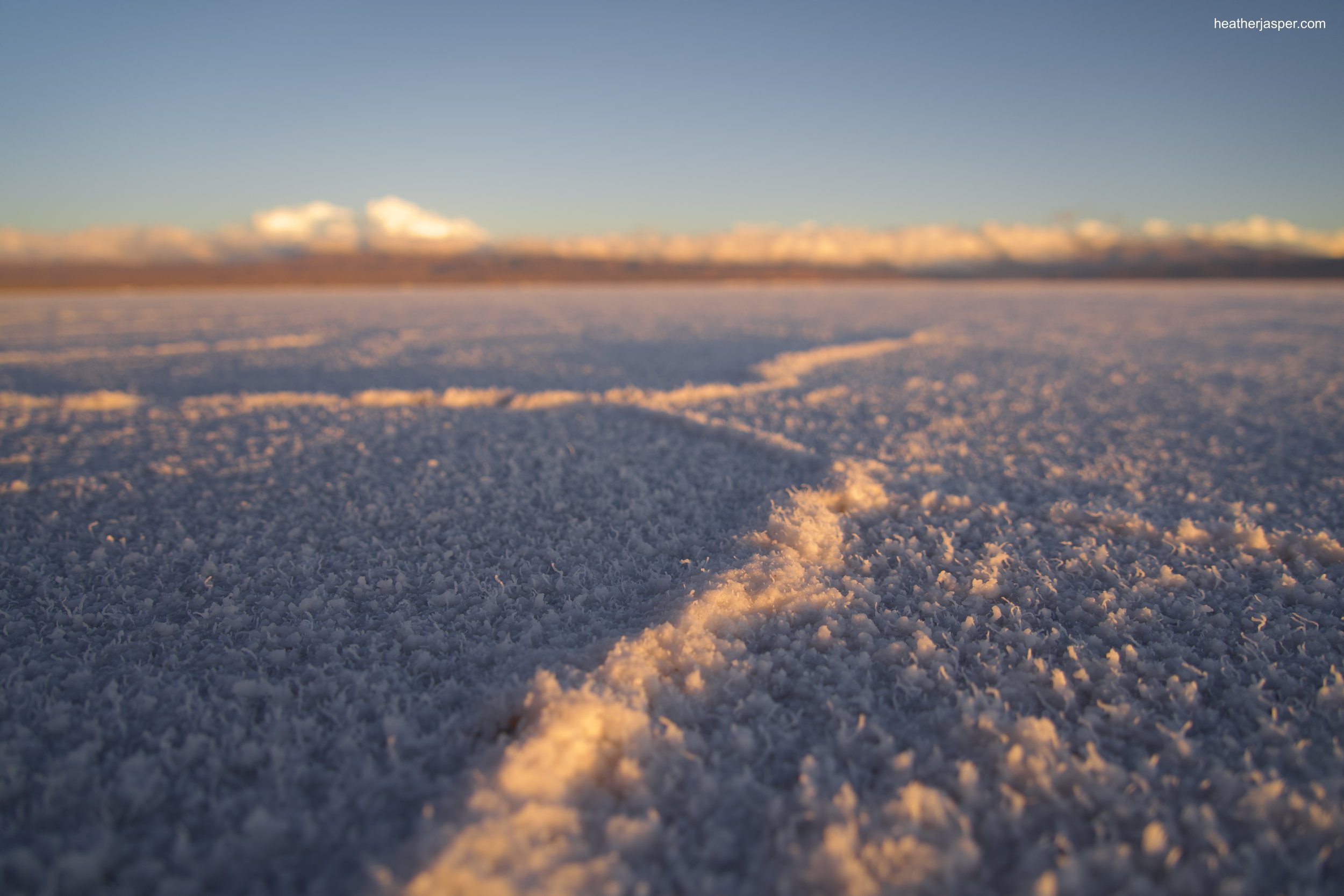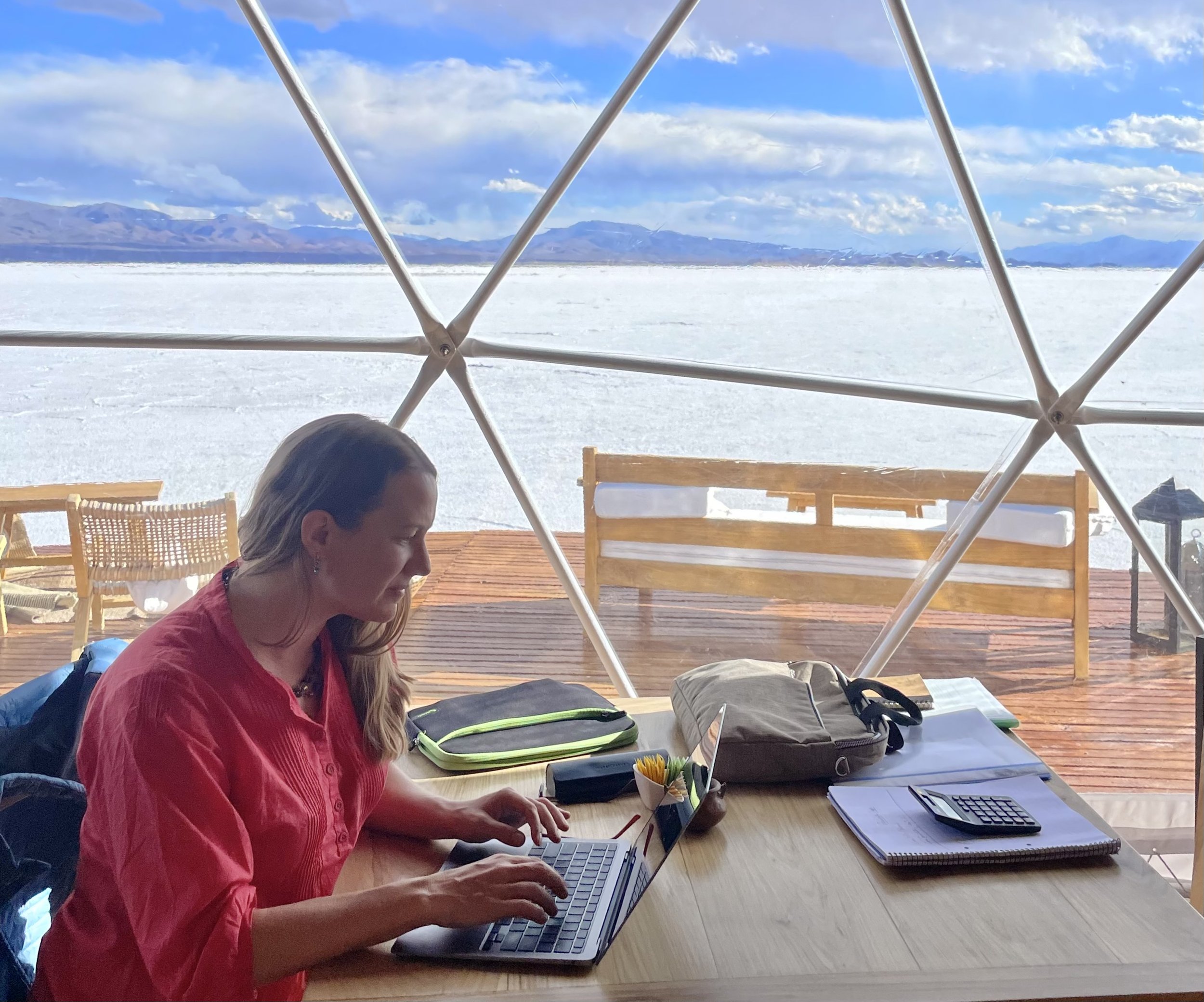Pristine Camps Salinas Grandes
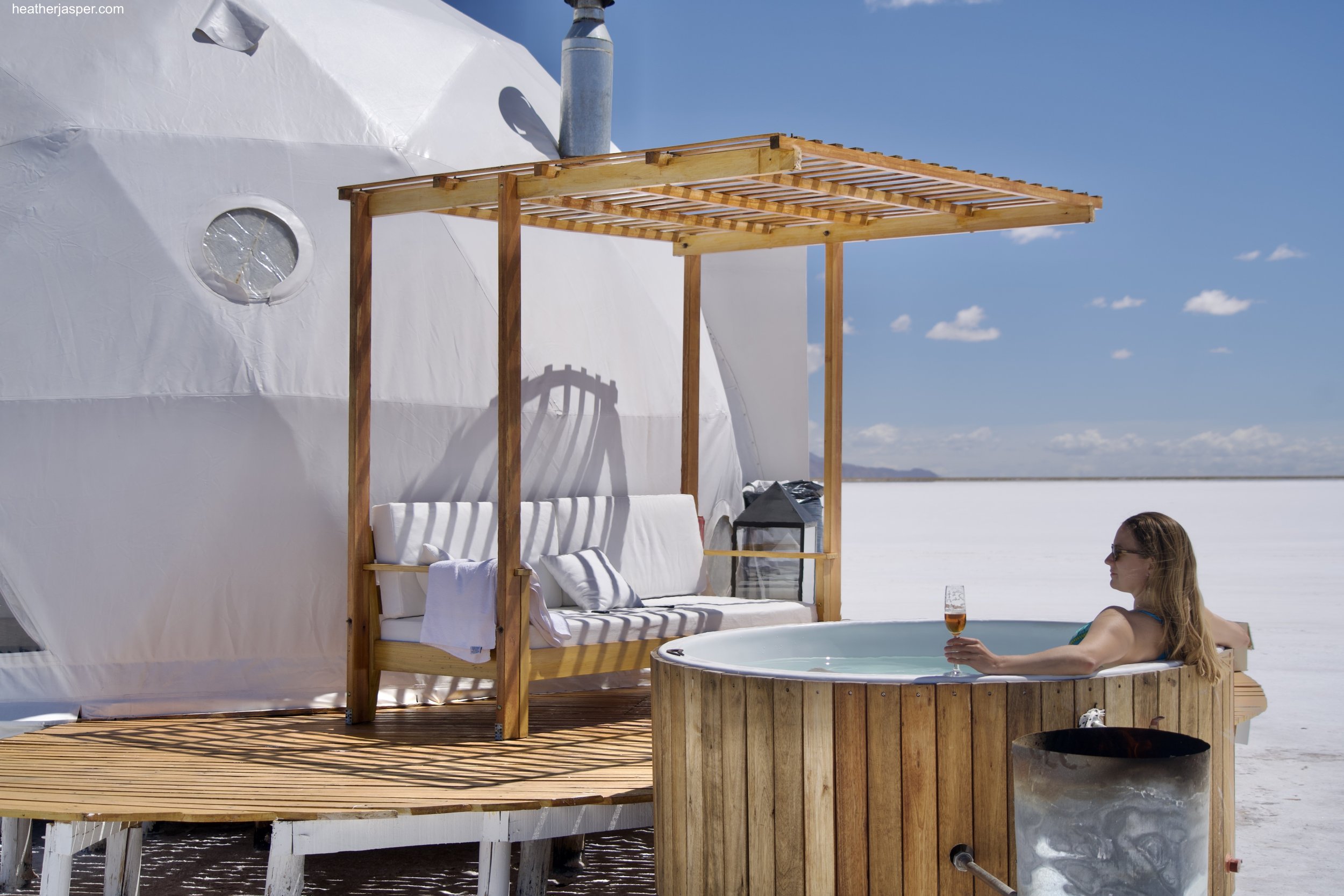
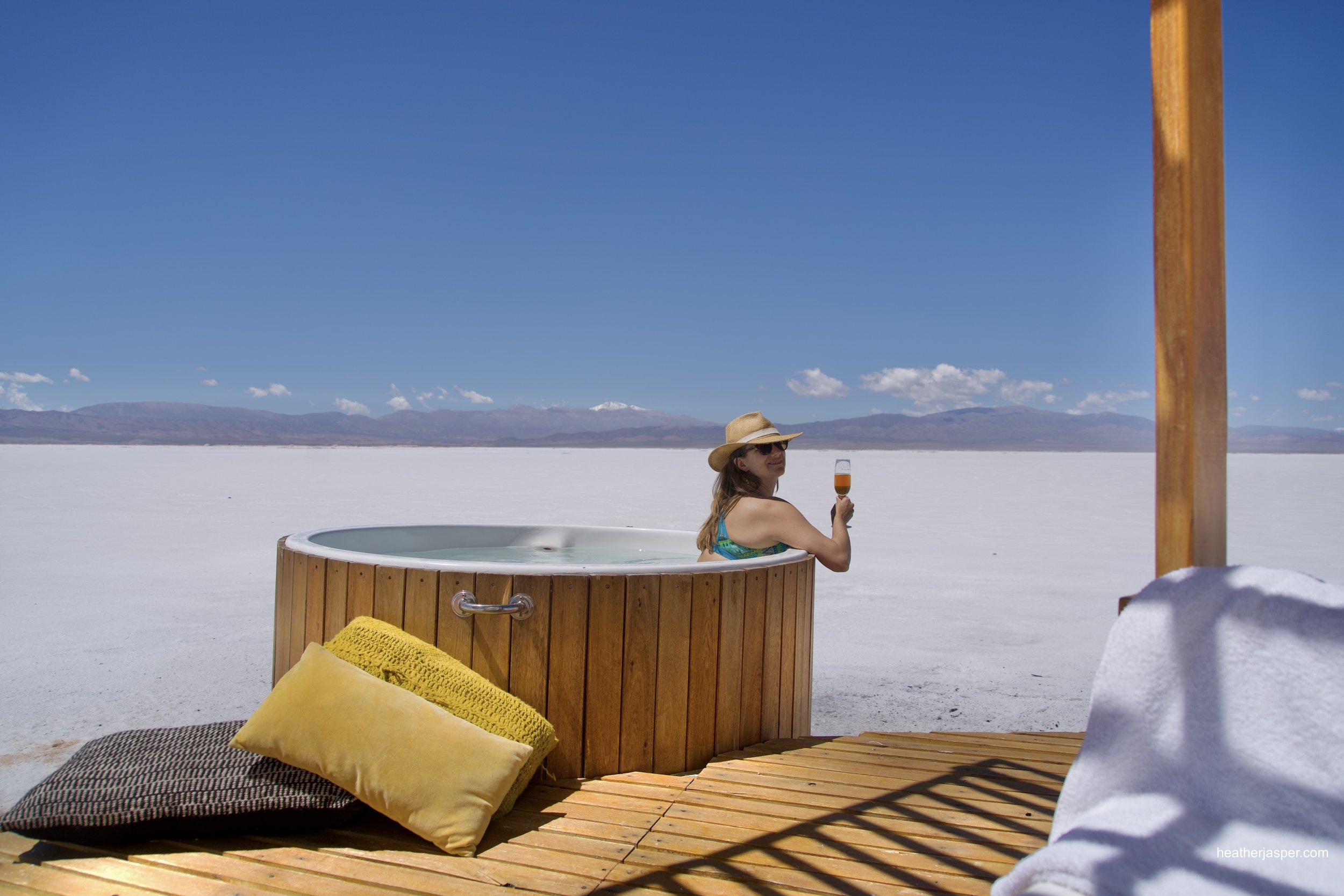

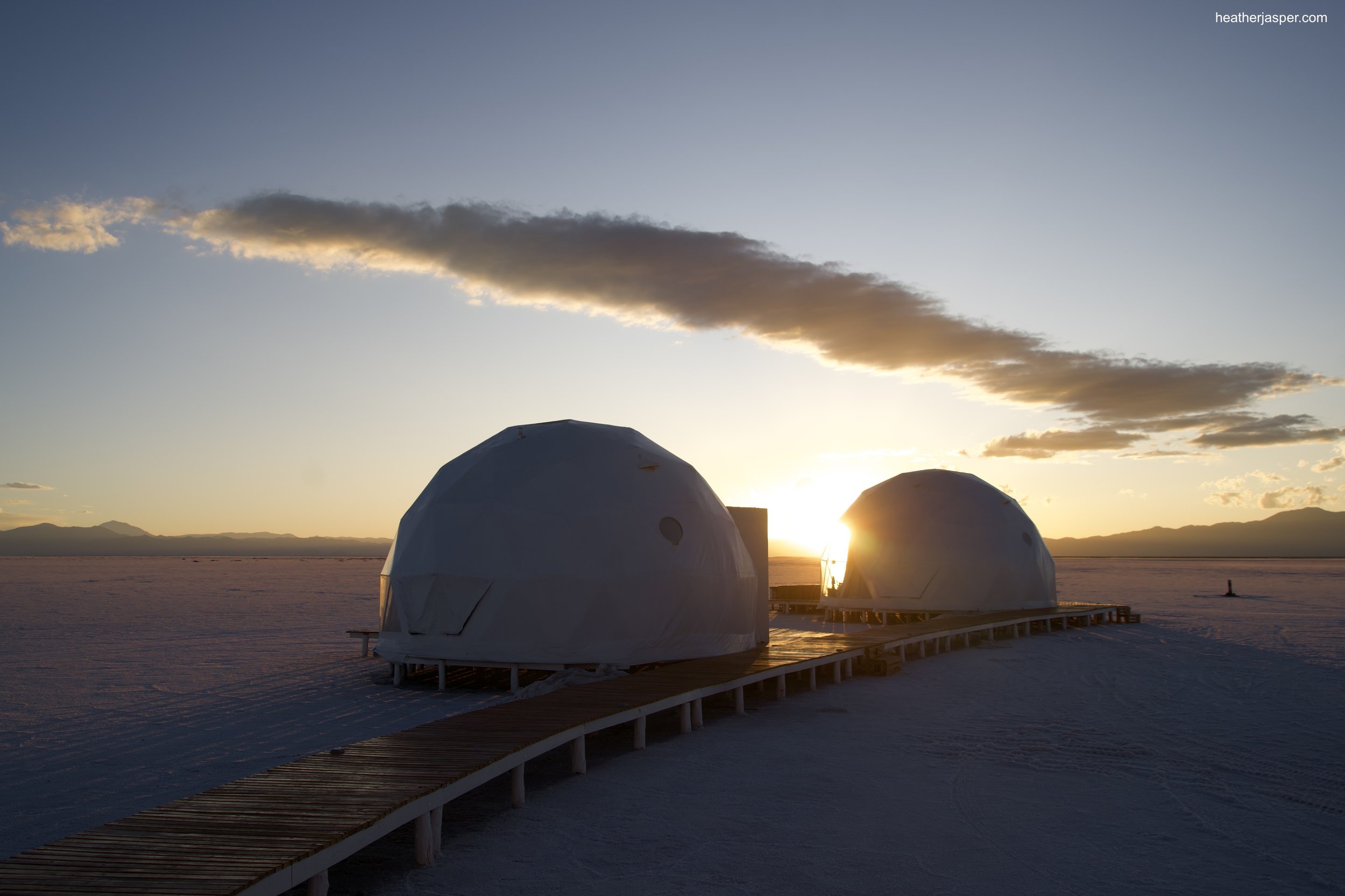
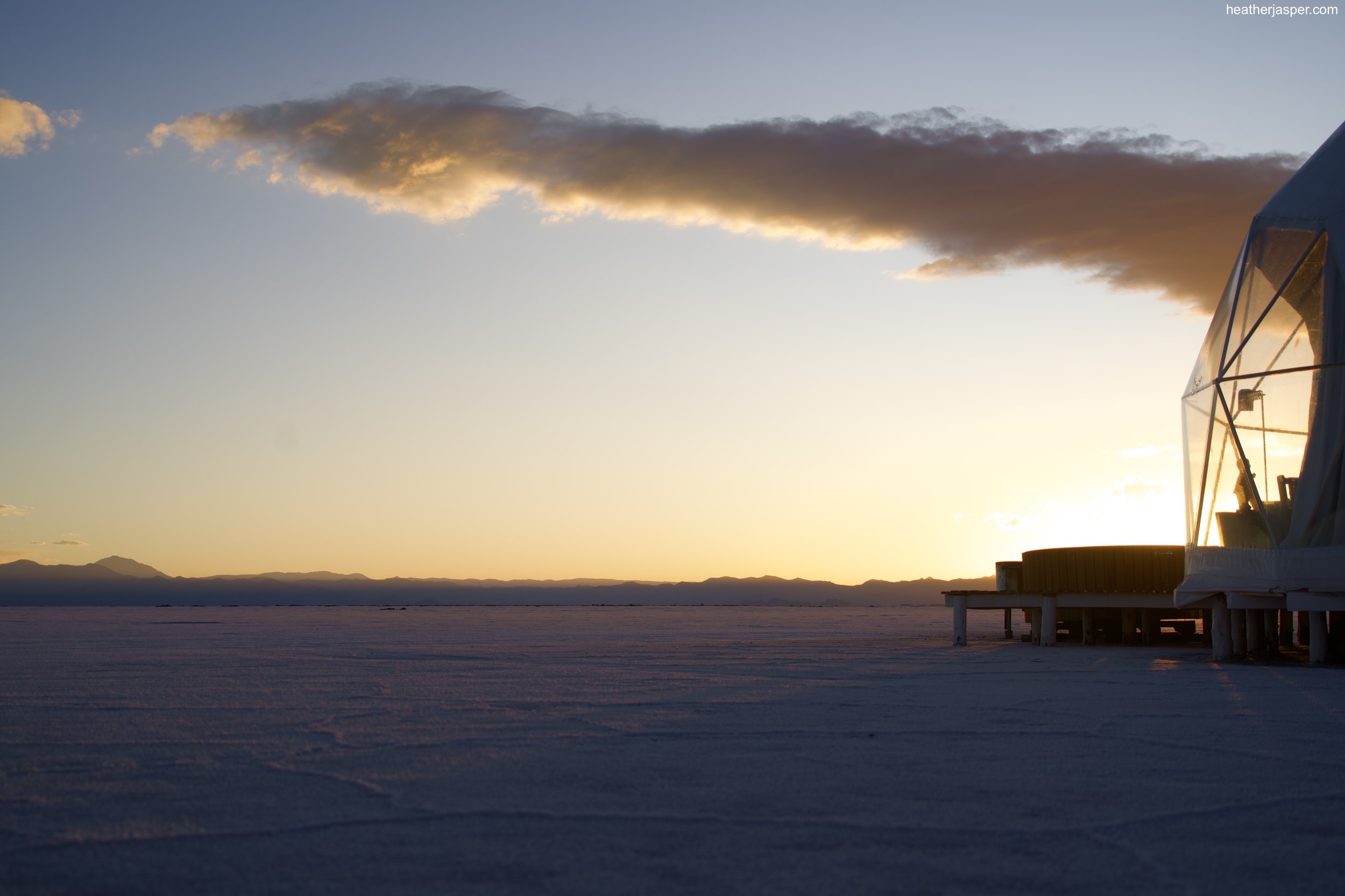
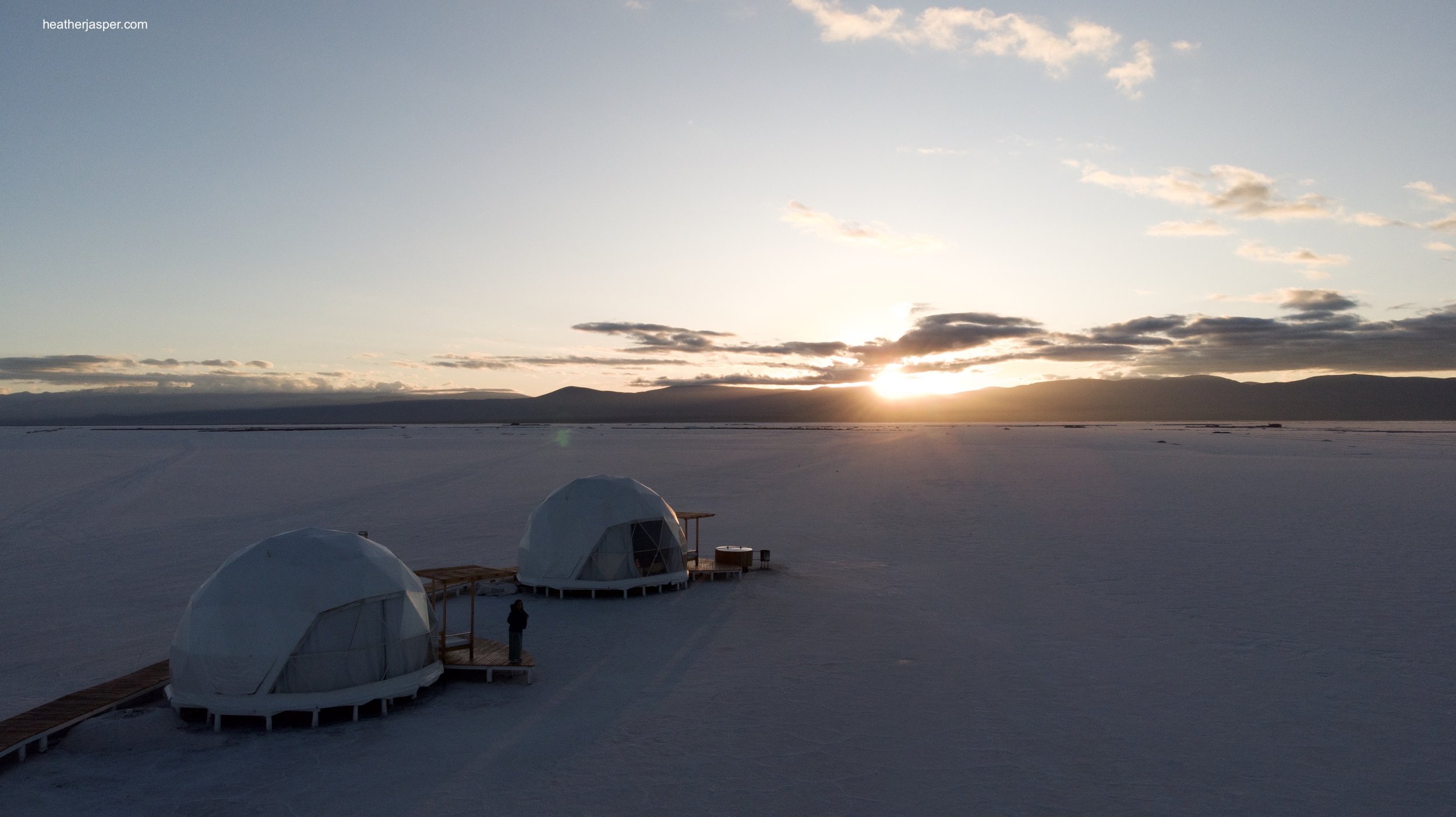
Pristine Camps at Salinas Grandes took my breath away.
Do hotels deserve a whole blog to themselves? No. Does Pristine Camps at Salinas Grandes deserve its own blog? Absolutely. Read my reviews of Pristine Camps published by Luxury Latin America and Going.
Staying at Pristine Camps is the best way to experience the salt flats in northern Argentina, which is the most otherworldly place I’ve ever seen. I’ve been in spectacular deserts before, especially in the Four Corners area of the US, but I’ve never seen anything like Salinas Grandes. It was like being on the moon.
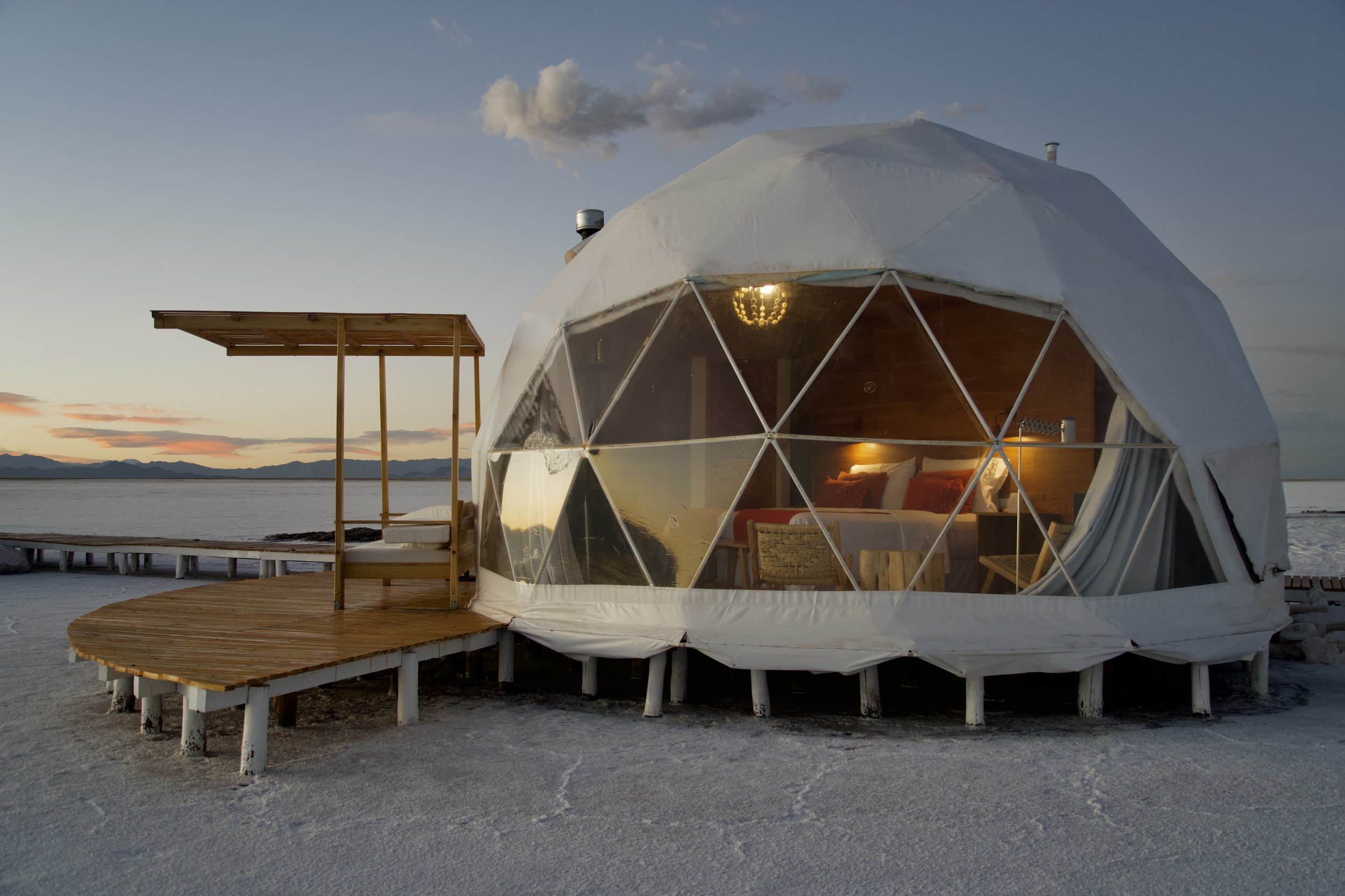
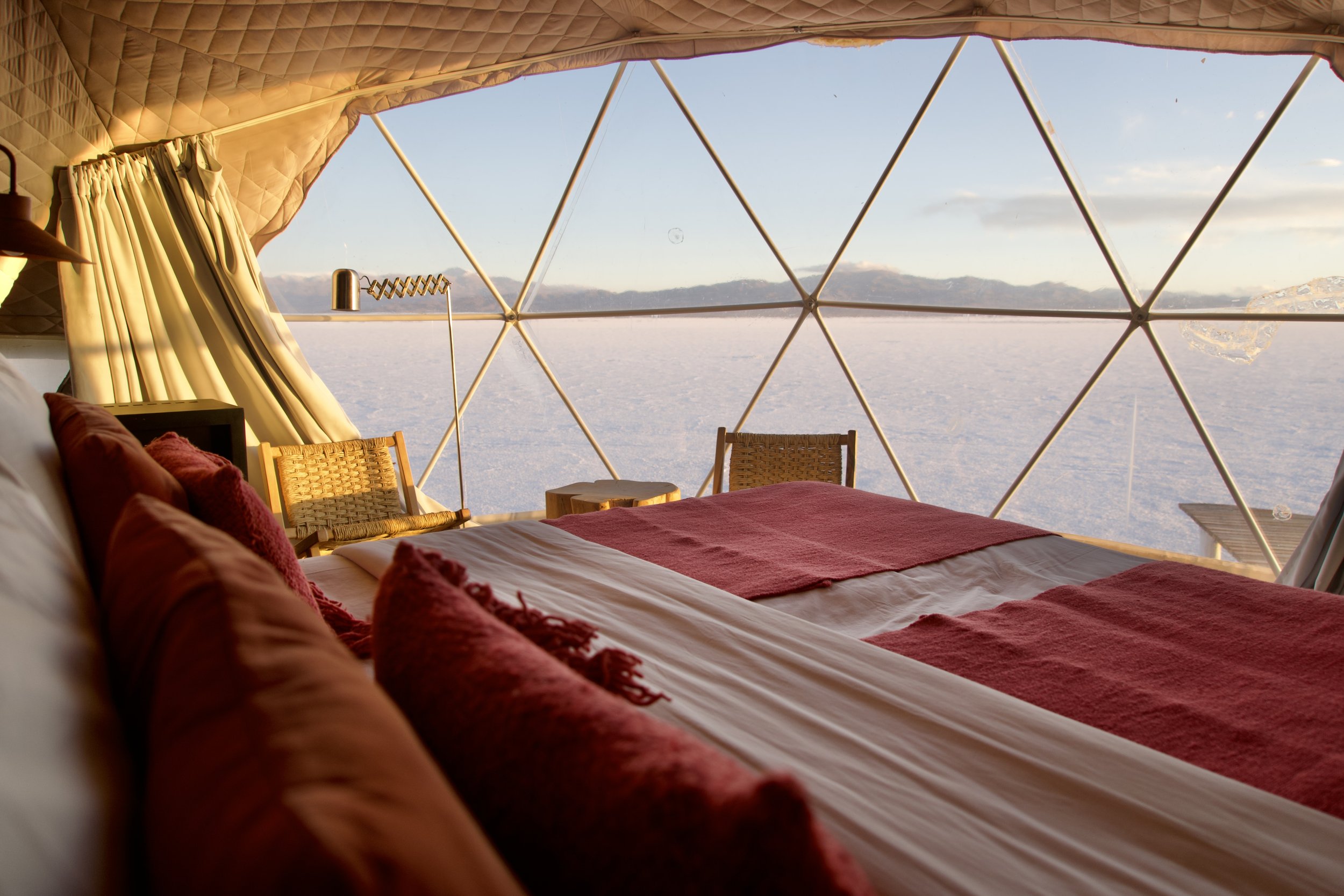

My dome was truly the lap of luxury.
I was very comfortable but also kind of felt like I was in a spaceship because of the curved windows out onto the salt flats. The dome is perfectly designed for comfort and I was impressed with all the amenities. The bathroom and shower were as nice as any good hotel. The little touches like a stocked mini-fridge, personalized welcome notes, a thermos for hot drinks before breakfast and chocolates were all on the 5 star hotel level. The fridge had snacks and a wide variety of alcoholic and non-alcoholic beverages.
Night out on the salt flats gets very, very cold but the dome has both a fireplace and a heater that burned some kind of environmentally friendly alcohol. Everything about that dome was designed to give guests the most luxurious experience possible in such an extreme desert environment. In the evening, the staff brought me a hot thermos so I could make myself a hot drink before getting out of bed in the morning. (3rd photo above)
The staff and guides were pure gold. Their attention to detail and personalized service impressed me even more than the spectacular landscape and amazing domes.
Being in a spectacular environment like that naturally makes me wonder what impact I’m having on the environmental destruction that humans tend to leave in our wake. That was actually my second reason for going all the way to the far north of Argentina to see Pristine Camps.
Protecting the salt flats
I know how fragile desert ecosystems are and how hard it is to bring groups of people to an area without destroying it in some way. I was doubtful initially, but Pristine Camps showed me that they really are protecting the salt flats.
Pristine Camps sold me on their “triple impact” model of creating positive impact for local community development, environmental impact, and economic development. It’s the sort of thing I’m always looking for in Peru, so I was intrigued to see it in practice in Argentina. I was also a bit skeptical if everything promised on the website was actually put in practice, and was relieved to see that it actually is.
For community development, Pristine Camps partners with the local Cachi del Chincho Indigenous Andean community. The community members are collaborative partners in the business and get a lot of say in how the camp is run in terms of how it impacts their home.
That community still harvests salt, as they have for thousands of years. The area that they said the camp could operate on is an area that doesn’t have a deep enough layer of salt for them to work with. It’s an area that they weren’t using before the camp was built. The camp is built on top of the salt without foundations below the surface. If the community withdraws their consent, the camp can be removed without leaving a trace.
Partnering with local communities
Pristine Camps is built on an area of the salt flats that is not used to gather salt. Other parts of Salinas Grandes are still used by the local community to harvest this natural resource.
The environmental impact is more complicated because any human presence generates damage. However, Pristine Camps is very careful in their energy and water use. The camp has a wall of solar panels to produce energy and all the bath products are biodegradable.
I was more impressed with the water. In order to not disrupt the water table that is only a few inches below the surface of the salt, all clean water is trucked in, and all gray water is trucked out. My dome had its own water tank, and the tap water was drinkable. The dome also had its own cistern that could be emptied when the gray water truck came. Yes, that is a lot of fuel for trucks, and I doubt the trucks are electric. Still, it’s the least bad option in terms of keeping the salt flats clean.
The economic development bit is simpler. Pristine Camps is providing employment in an area that has few employment options and hires primarily from the local community. It is creating economic options that help the community fight the proposed lithium mines which would definitely destroy the ecosystem.
Working remotely in Salinas Grandes
I would be hard pressed to find a more inspiring place to write.
Staying at Pristine Camps was a luxurious experience, but it is also the only way to fully experience the salt flats. The closest town with lodging is over two hours away. If you want to stay for night photography, you really need to spend the night there. It’s really not advisable to try traveling at night and you certainly should not try driving across the salt flats at night. Even during the day, you need to know the area well enough to know where water wells up and creates holes in the salt flats’ crust.
Night photography at Pristine Camps
Every night one of the guides took us outside and showed us how to do night photography. They were all skilled photographers, so the hardest part was getting us to stay still long enough for the shot.
Night portraits for guests
Not only do guides take photos of guests, they also will teach people how to use their own phones and cameras for night photography. Martín Alejo helped me with the settings on my camera to capture both the stars and a distant lightening storm. (below)
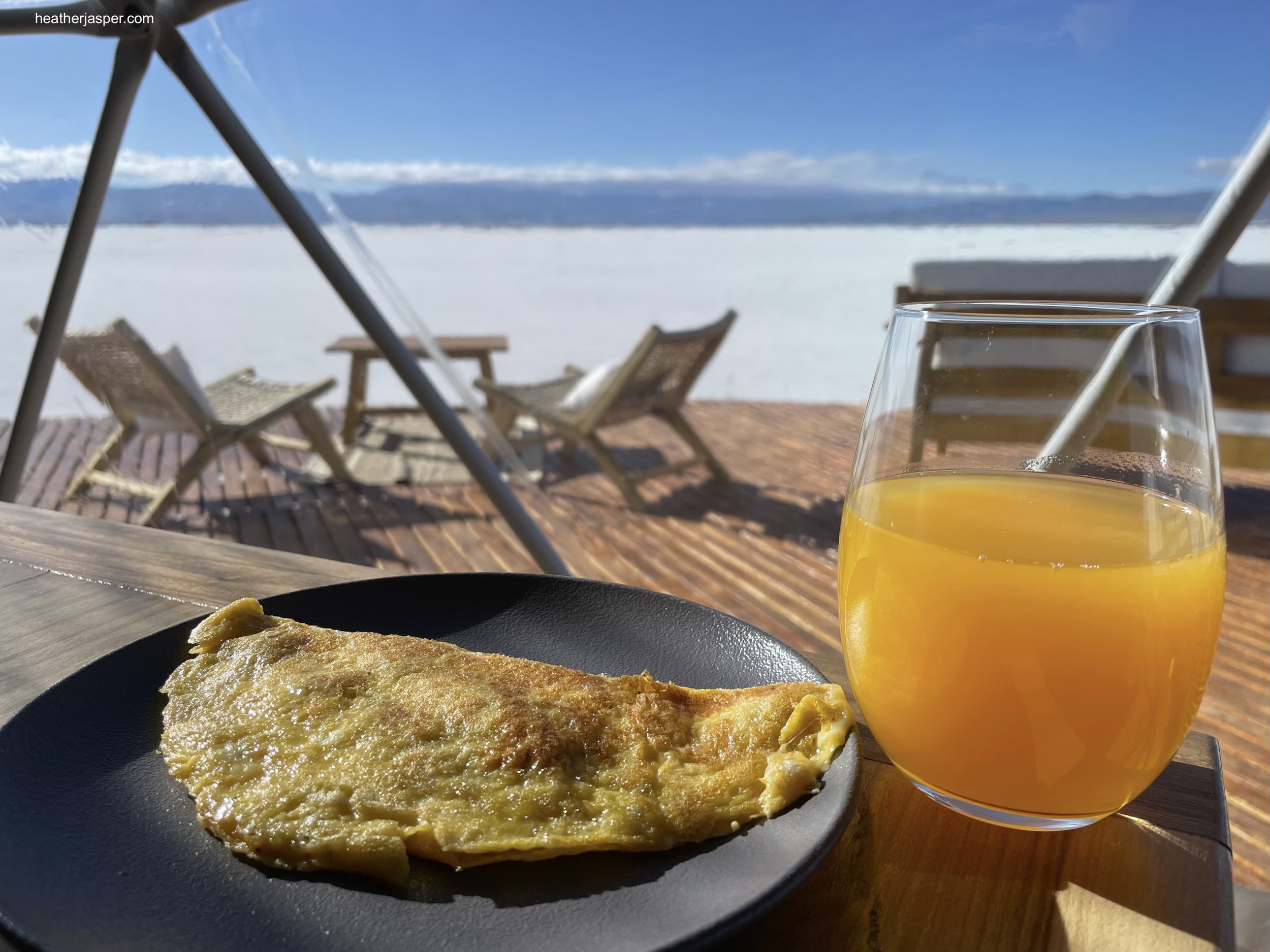
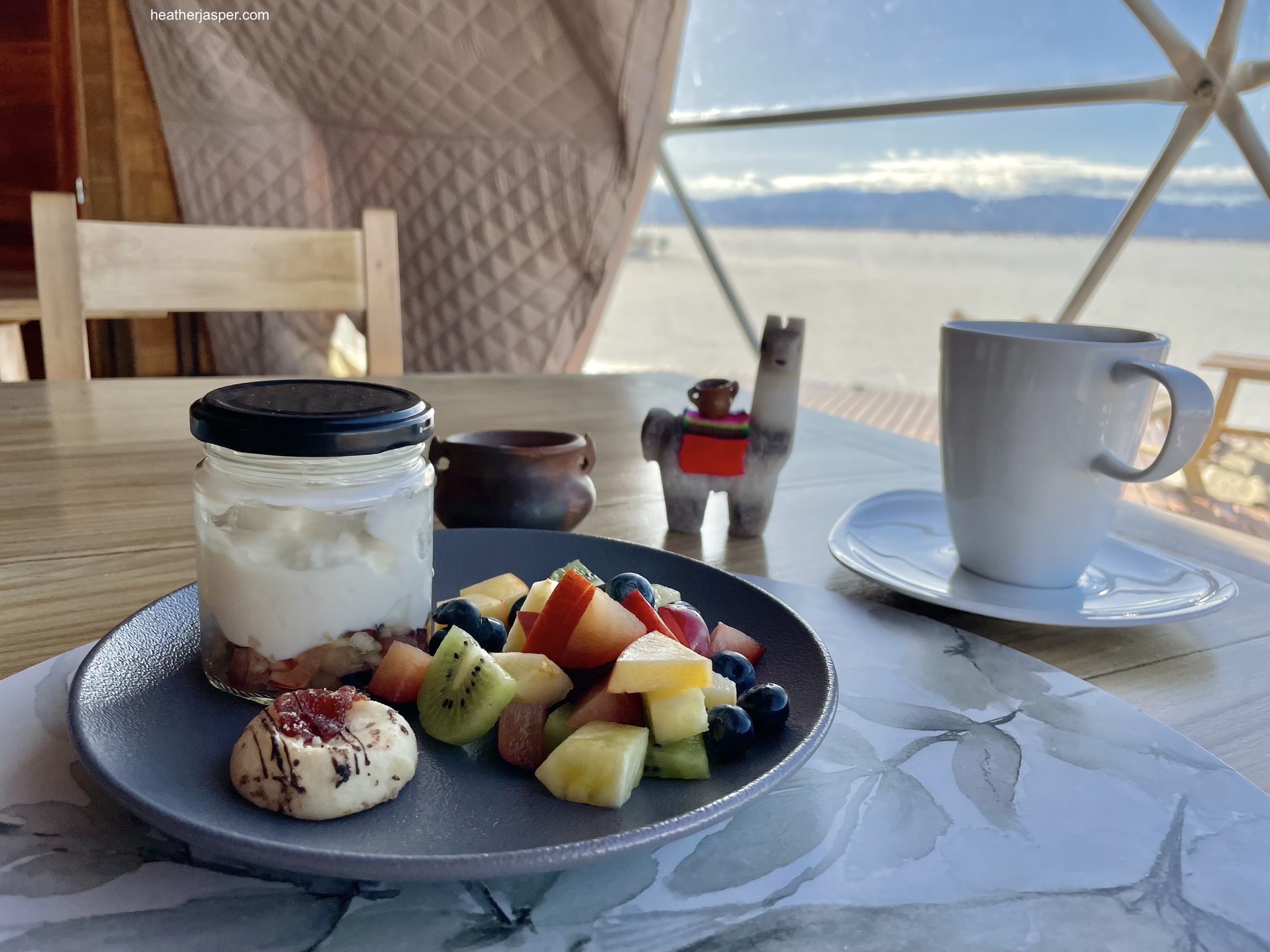

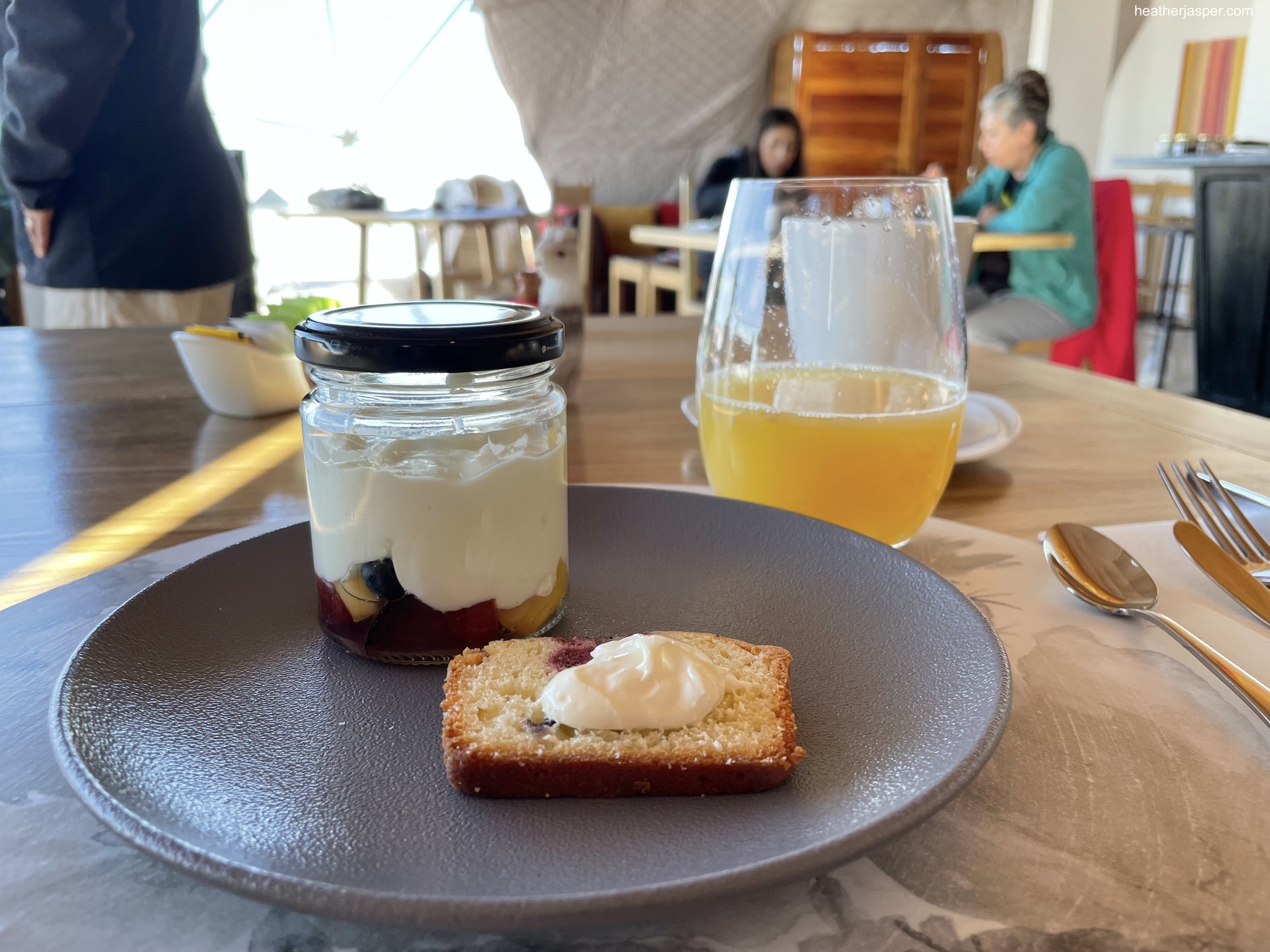
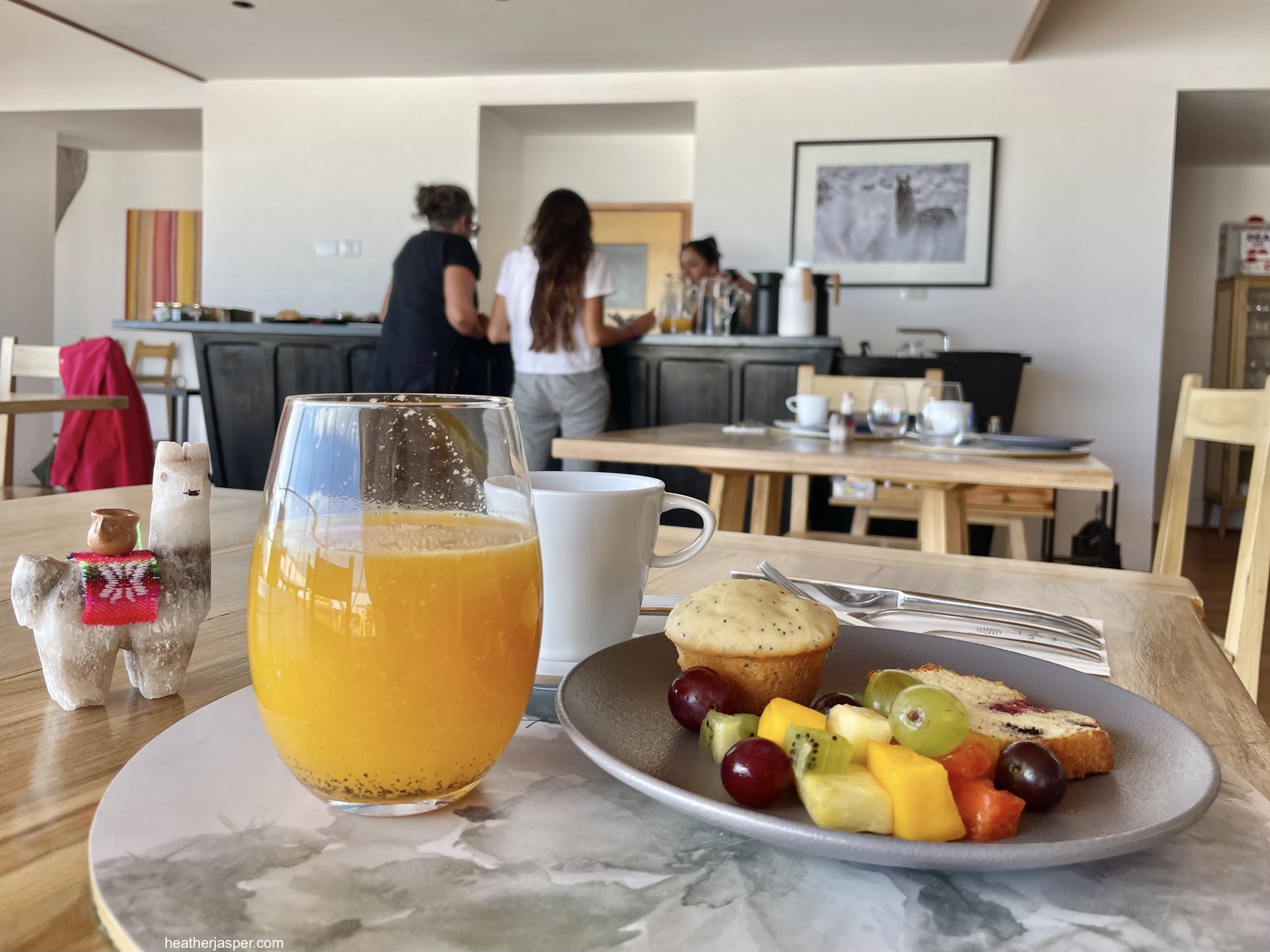
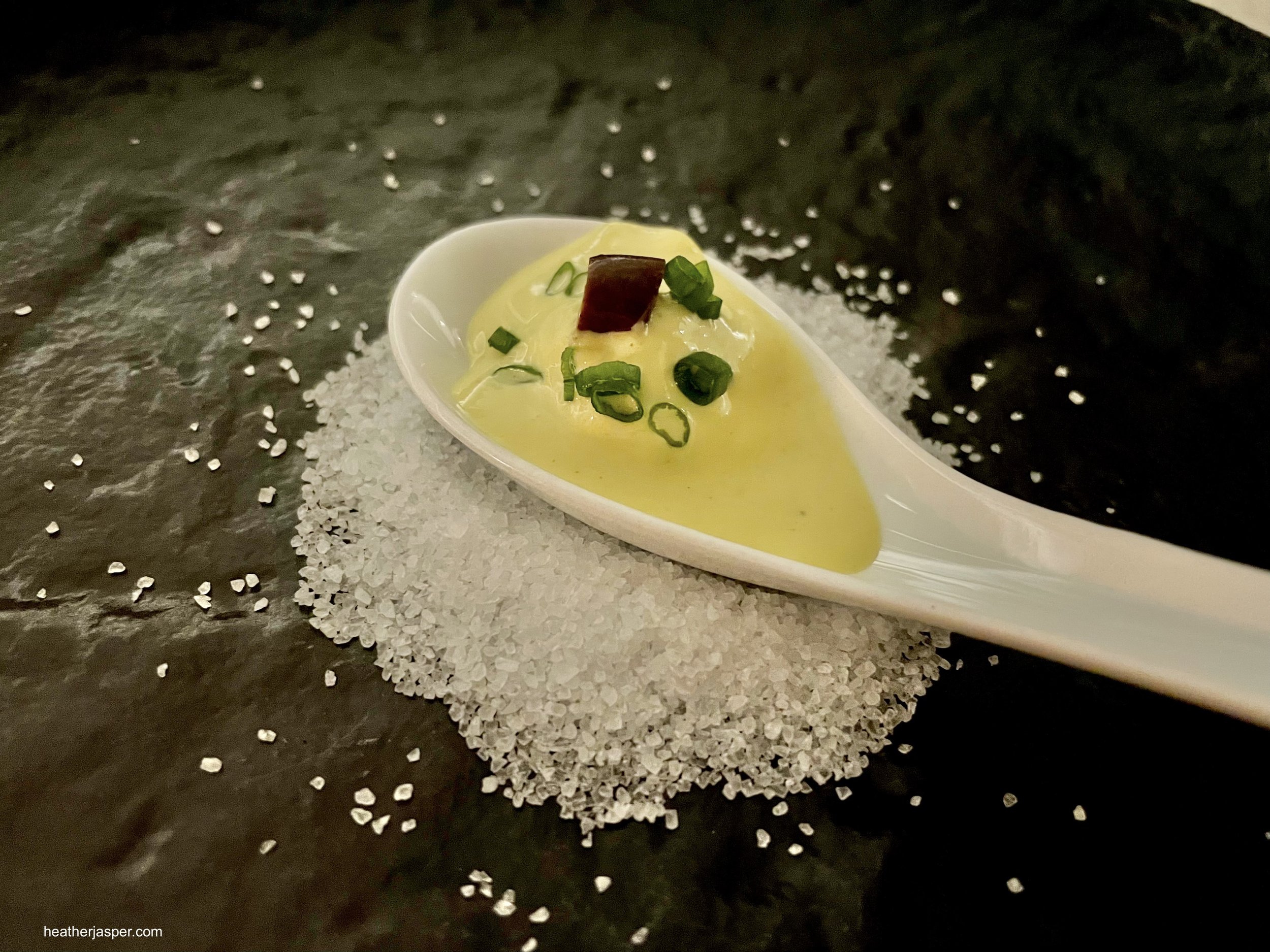

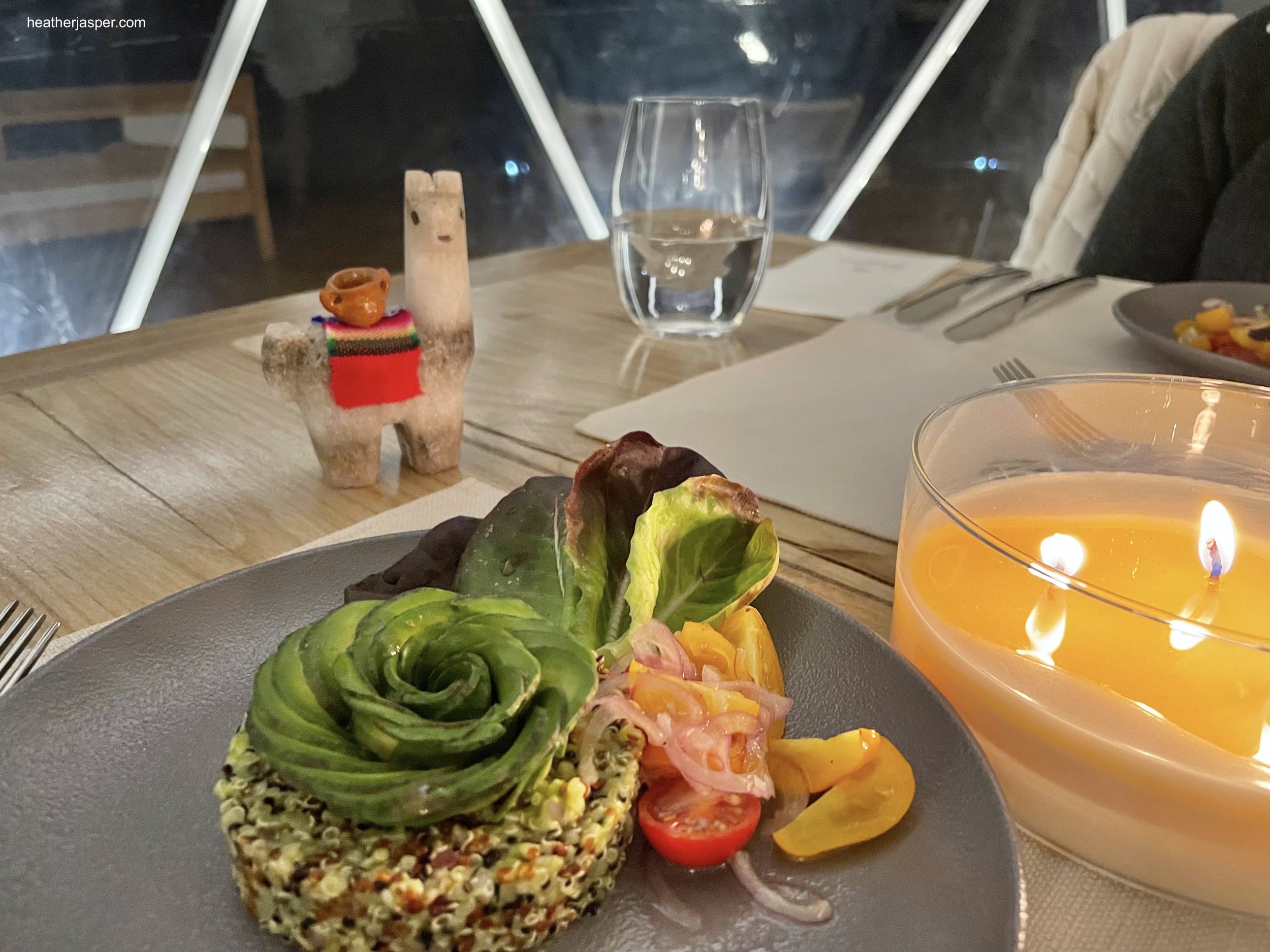
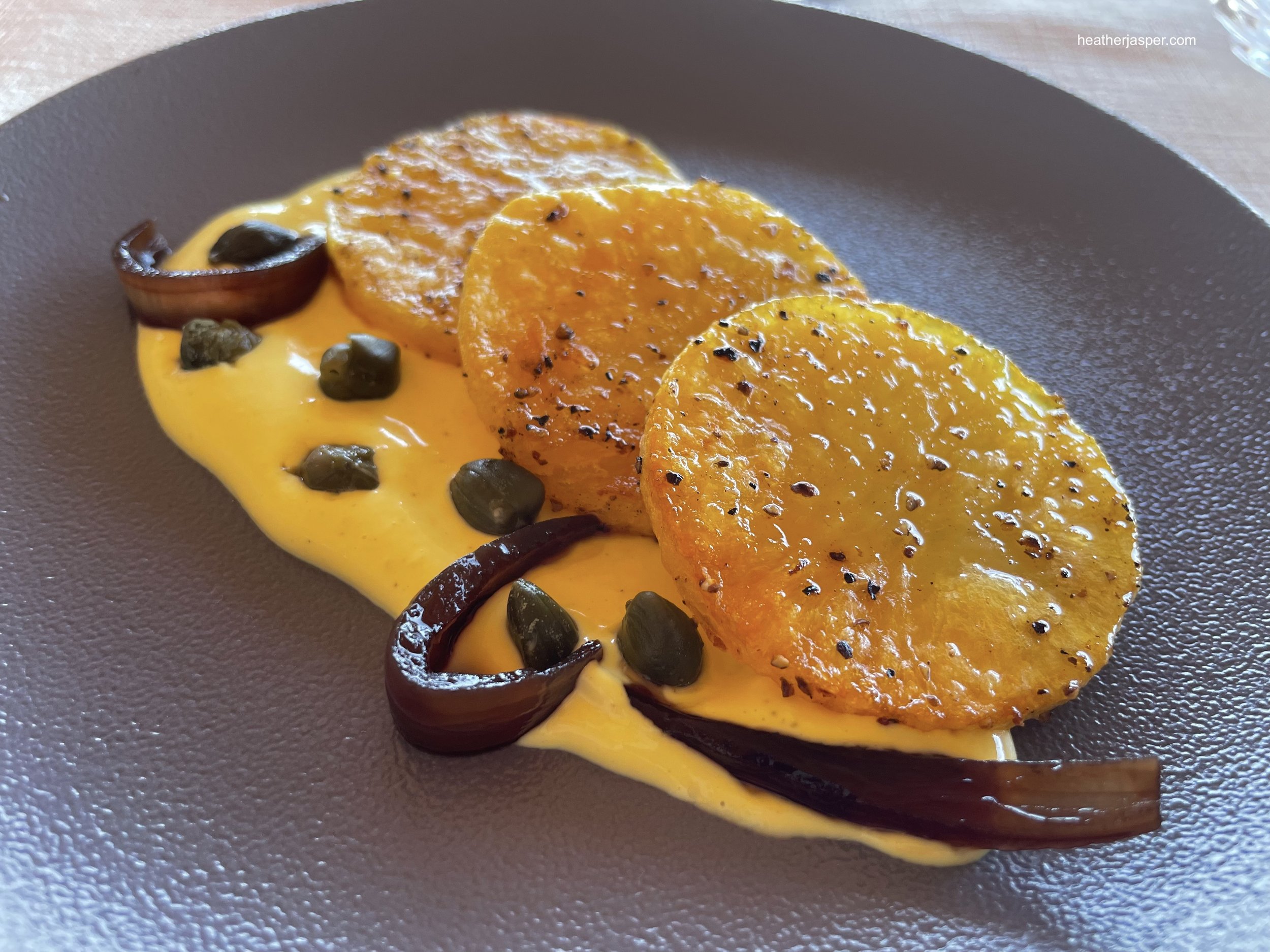
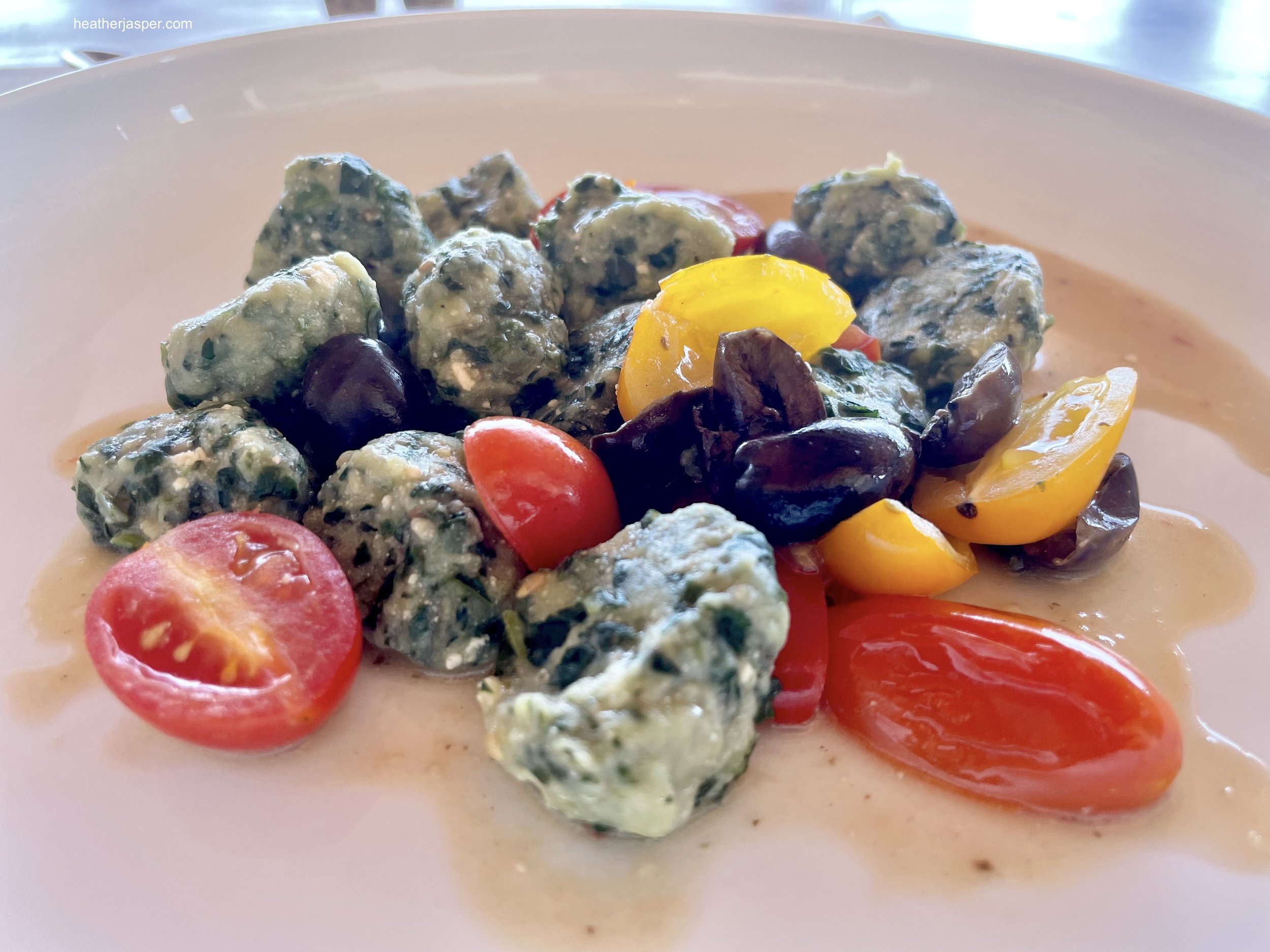
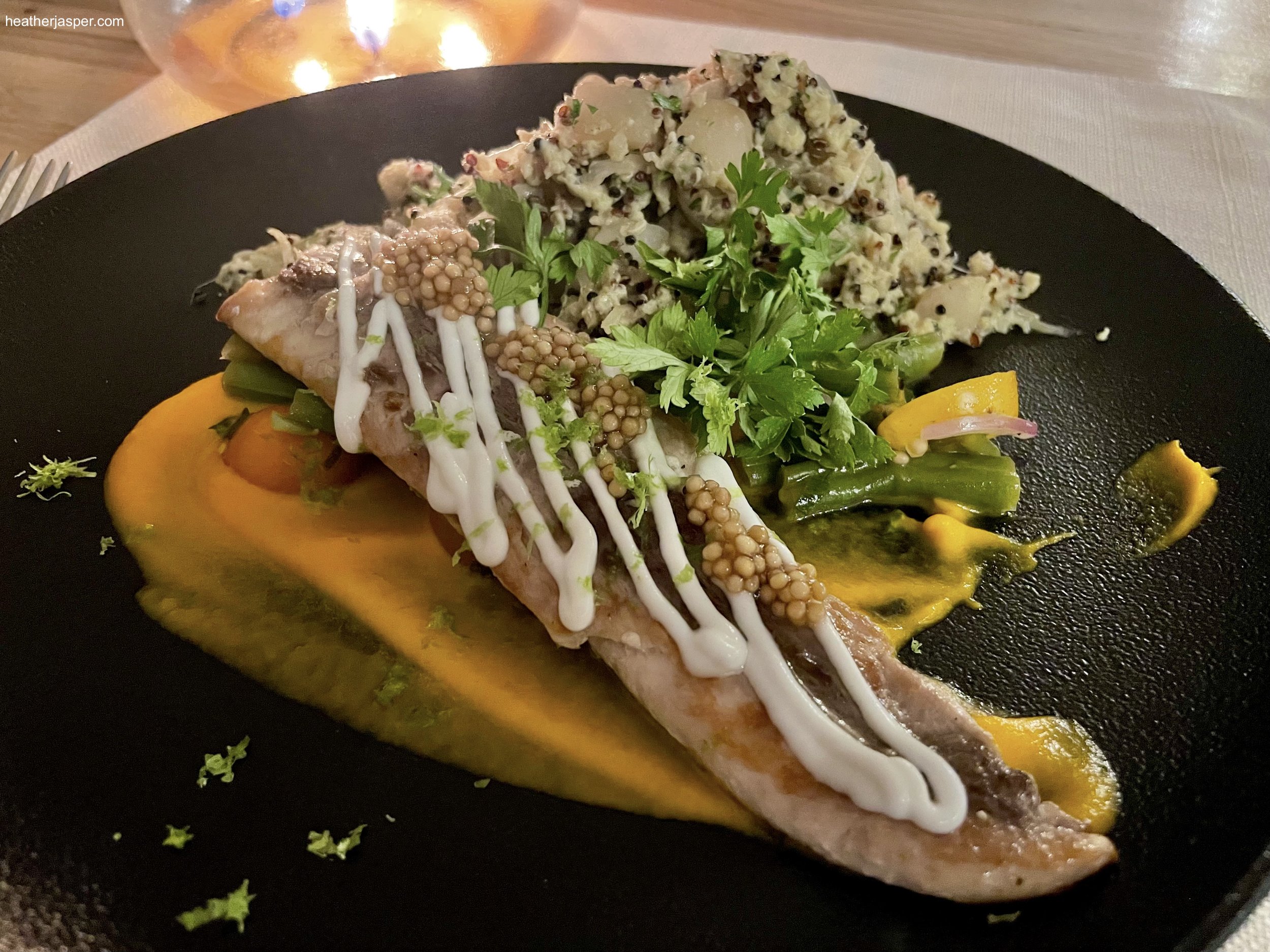
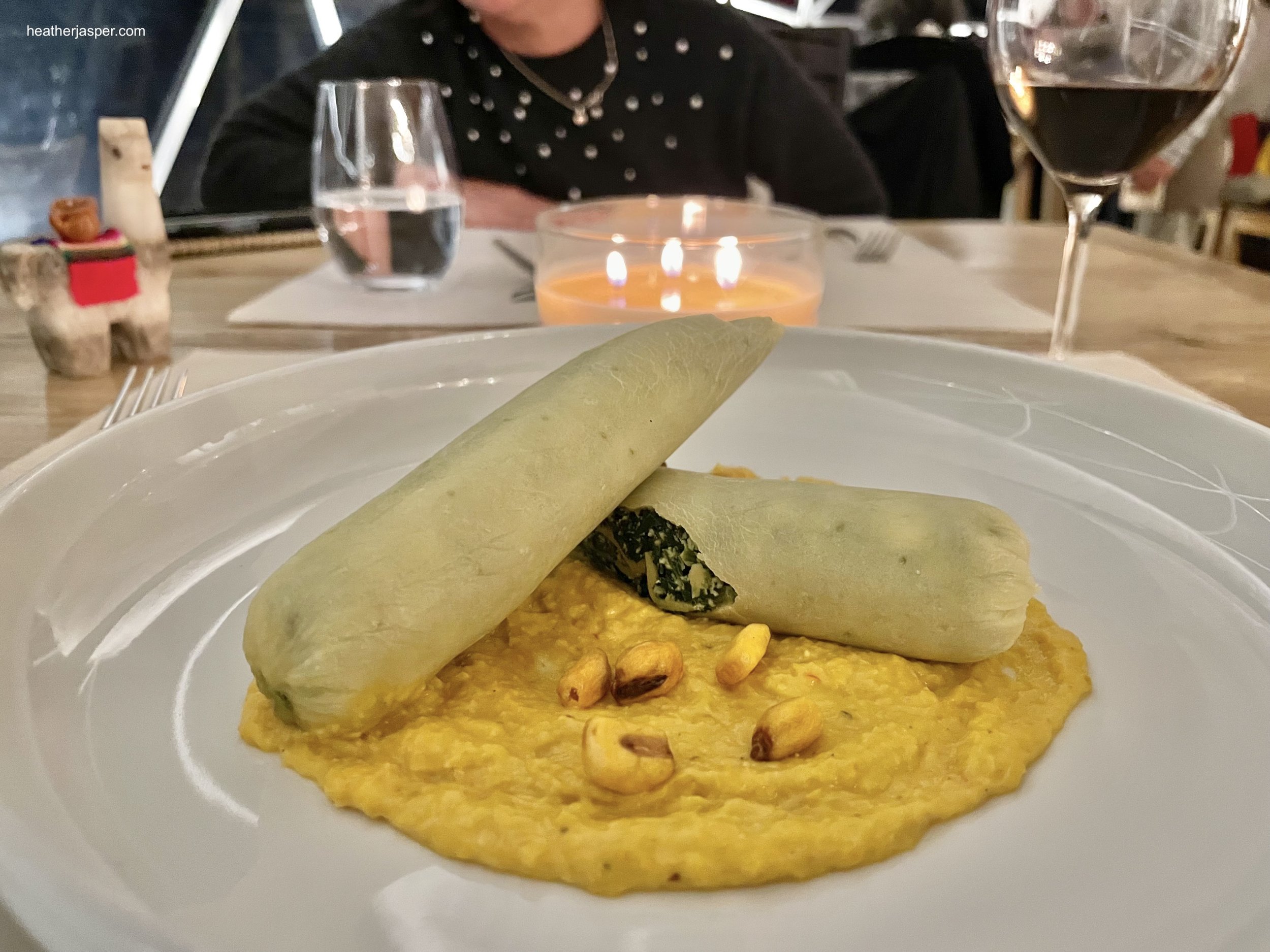
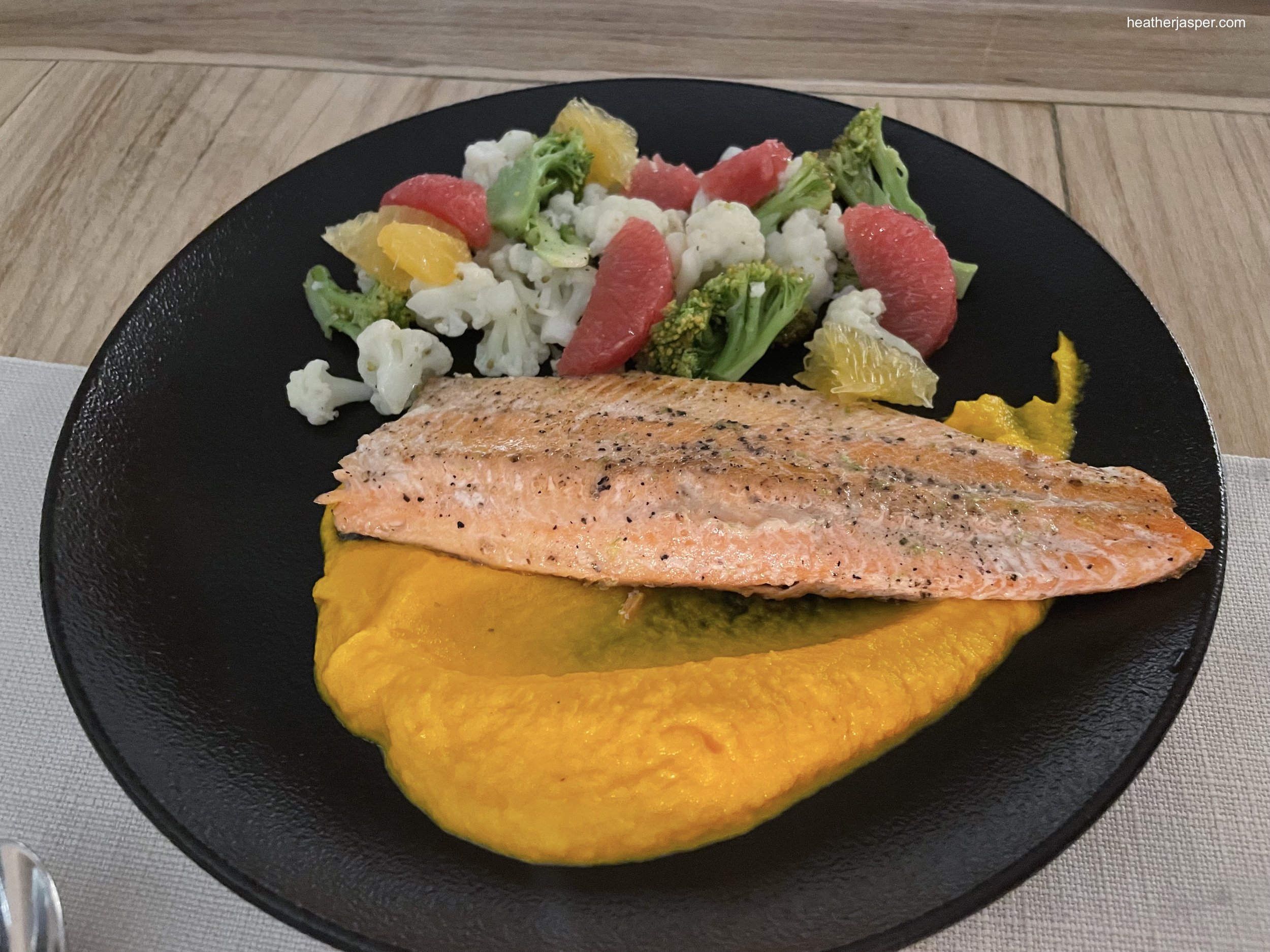
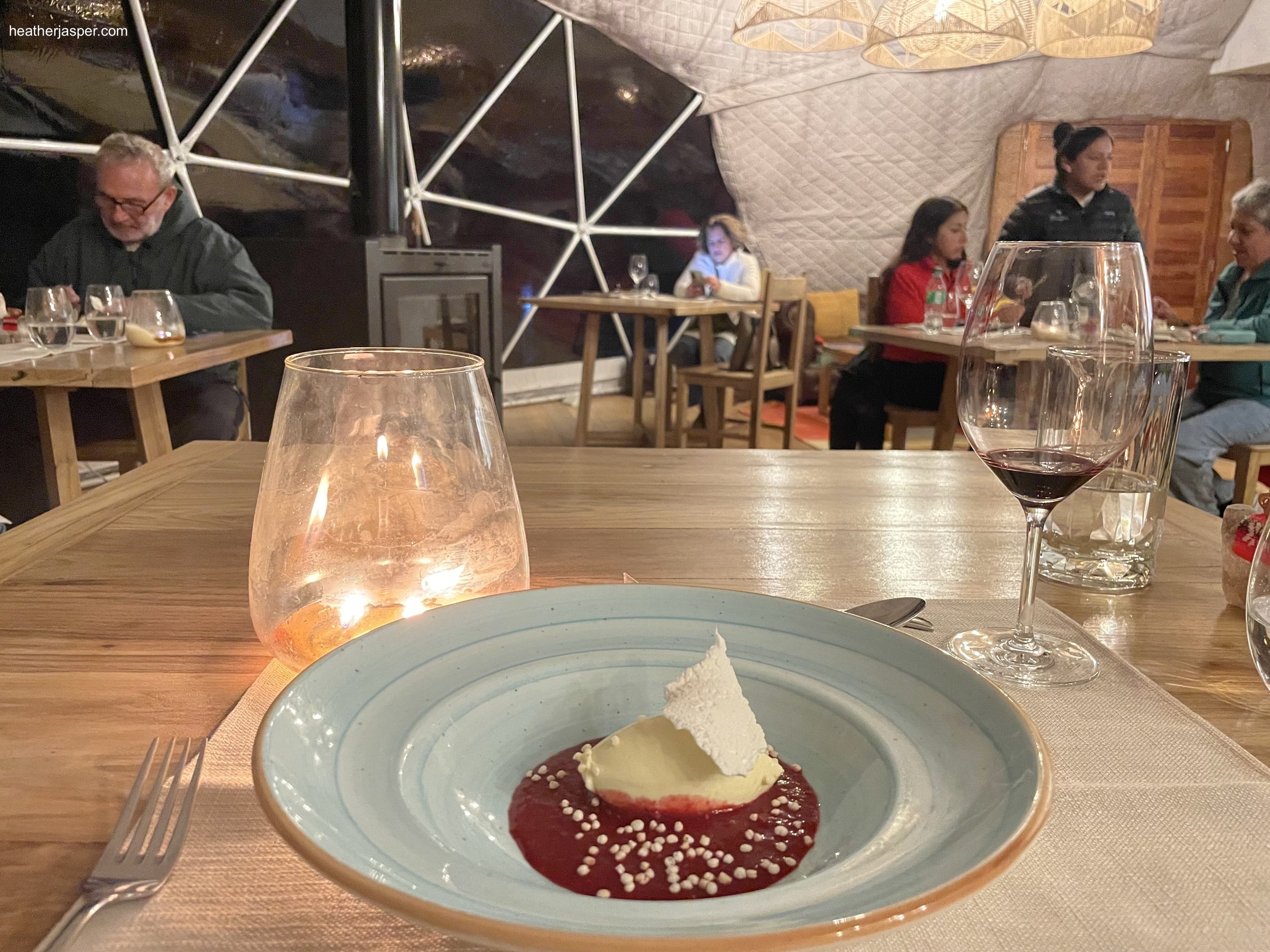
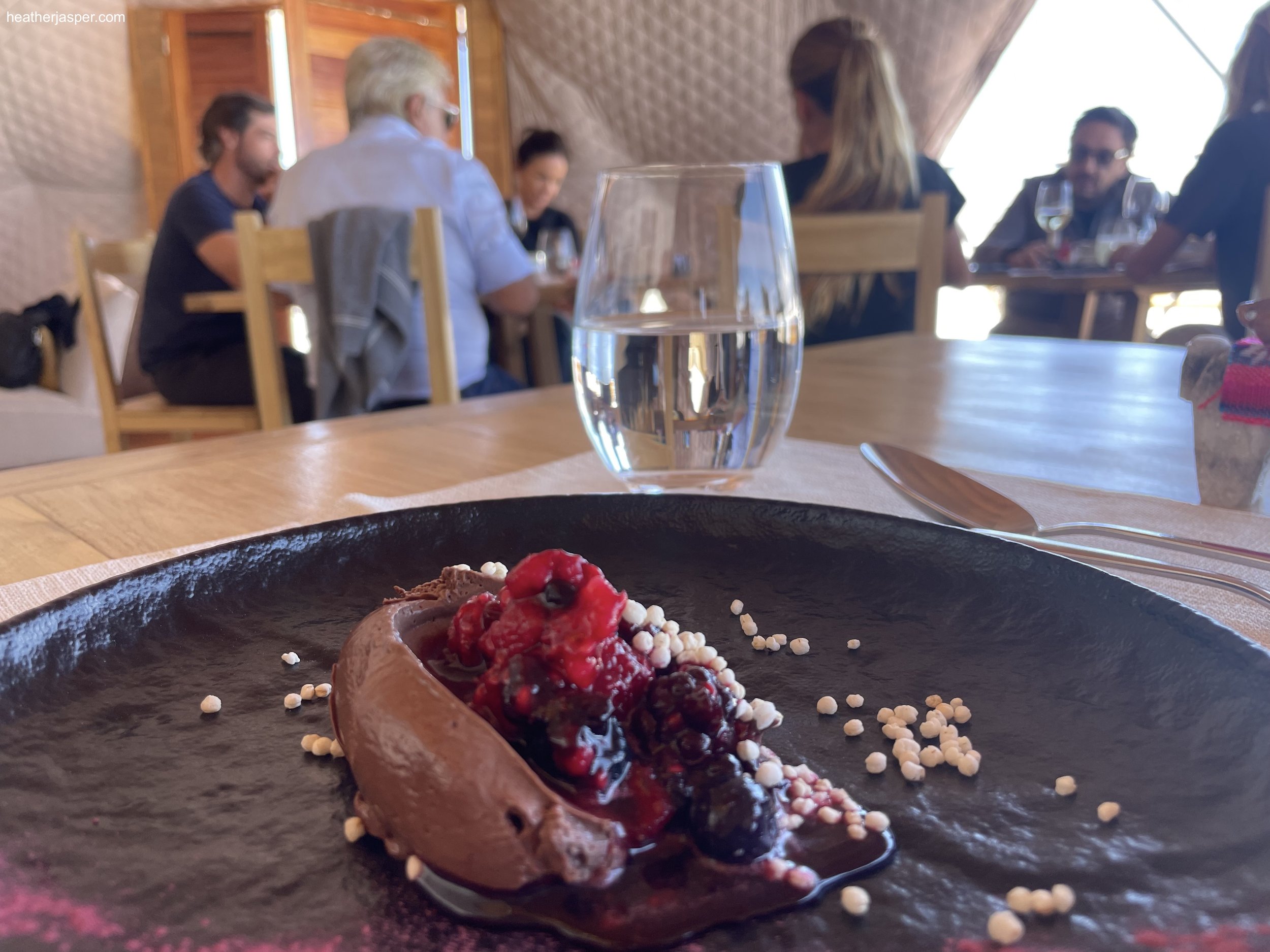

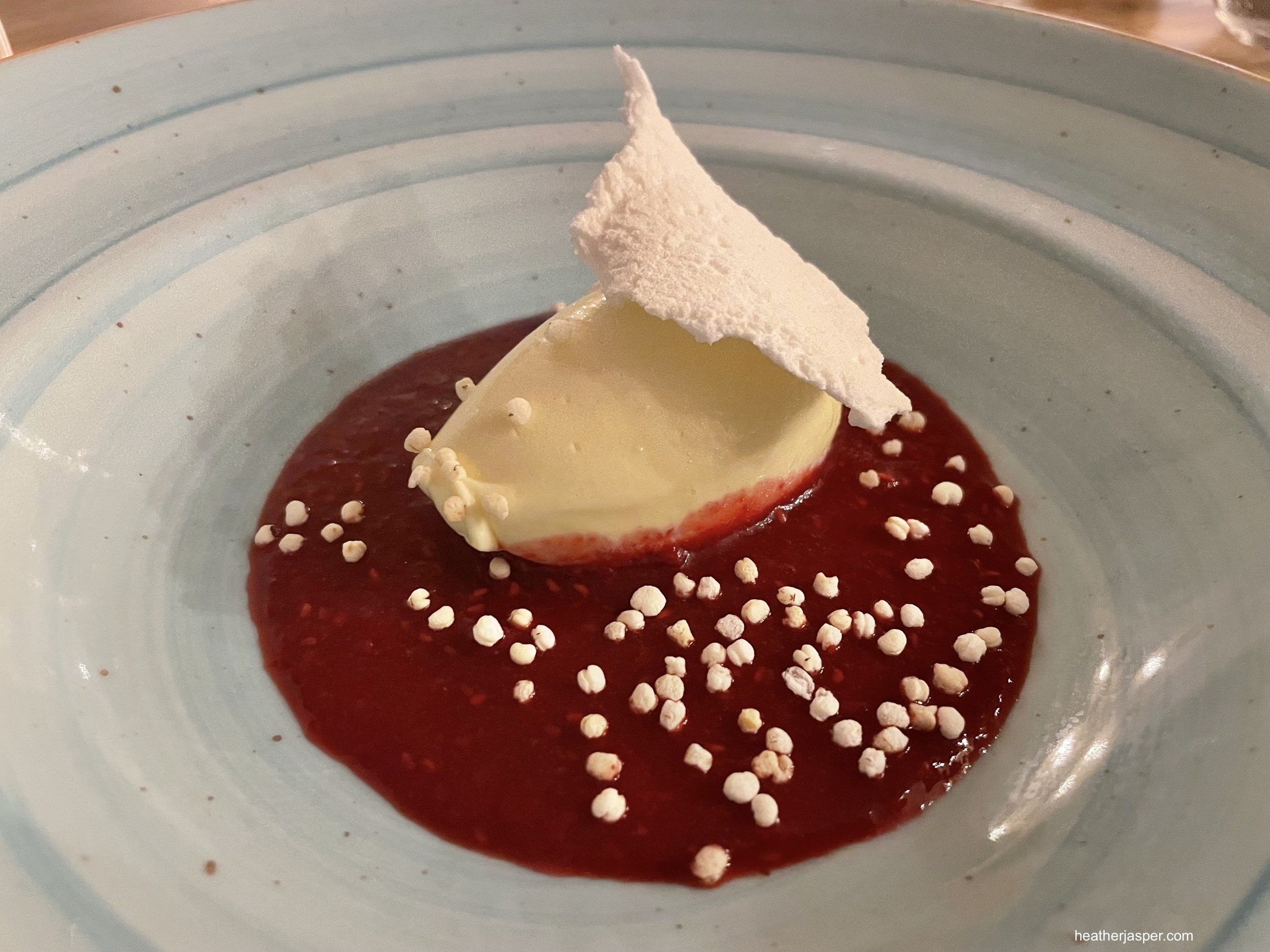
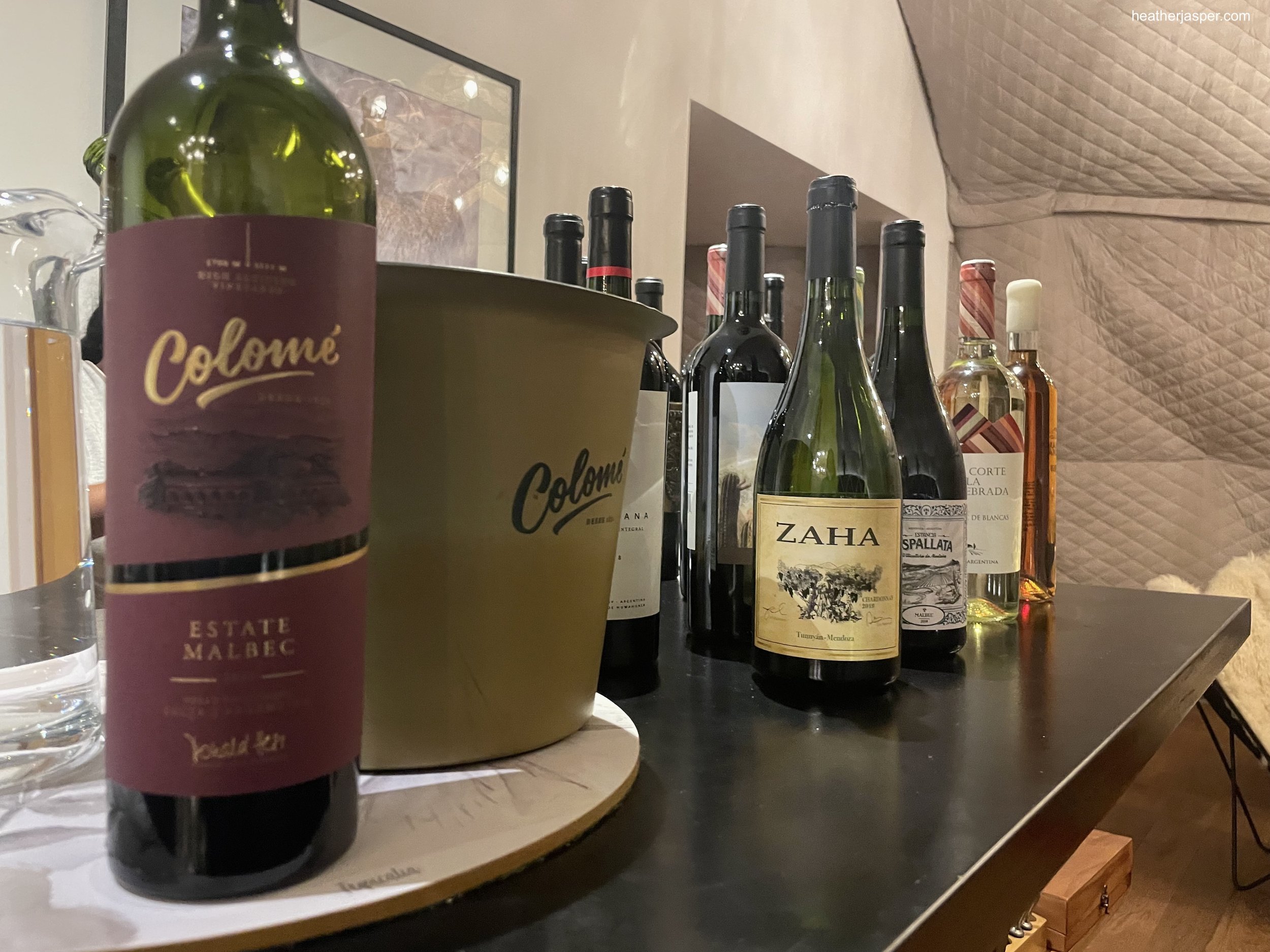
If the lunar landscape hadn’t already blown my mind, the food would have.
I am so thankful I had several days so I could eat more than just one breakfast or one dinner. I always had lunch out on an excursion and I’ll include photos of those picnics with the blog about the excursion itself. The packed picnics were amazing but really the dinner menu was the star of the show. Every night there were three options for appetizers, three main courses and three desserts. Three is the magic number.
Afternoon tea
Besides gourmet breakfast, lunch and dinner, there was always afternoon tea served in the dining dome around 5pm. It was very easy to overeat but the food was so good I didn’t care.
Driving on the salt flats
There is a meeting point for guests of Pristine Camps before you actually get to the salt flats. You leave your vehicle in a safe place and camp staff drive guests the last bit across the salt flats.
How to get there?
Getting to Pristine Camps is a bit complicated, but totally worth it. First, I flew from Buenos Aires to the city of Salta. If you have an extra day before or after the experience at Salinas Grandes I highly recommend flying into Salta so you can check out the city. San Salvador de Jujuy is about an hour’s drive closer and if you just want to head directly out to the salt flats, that’s the best option. It’s closer but doesn’t have the tourist attractions you can find in Salta.
My visit to Pristine Camps was booked with Say Hueque, who did a fantastic job picking environmentally sustainable places for me to stay throughout my Argentina trip. They’re very easy to work with and I highly recommend Say Hueque for any and all Argentina travel!

